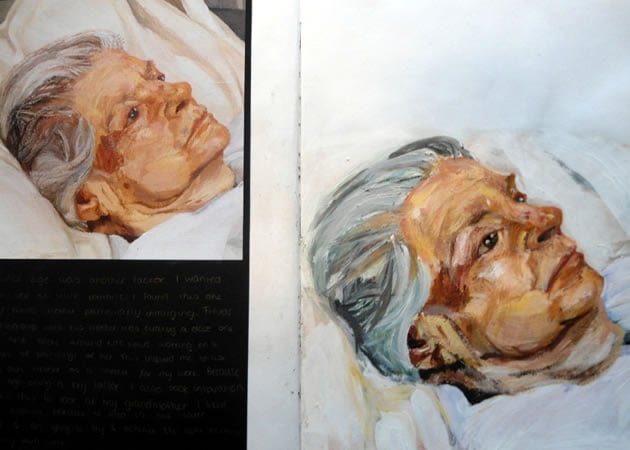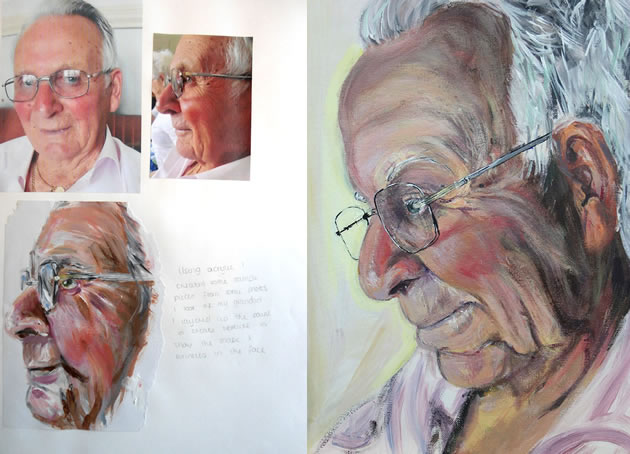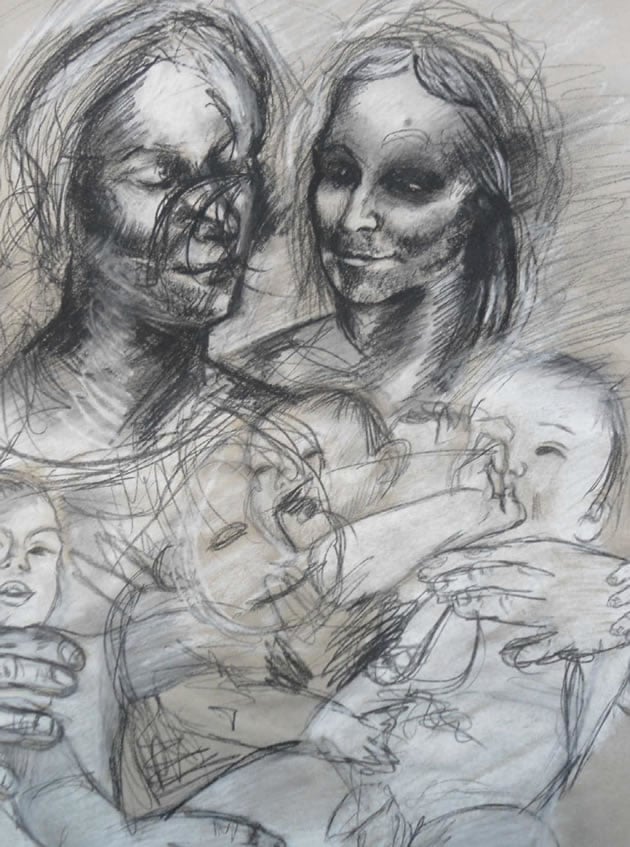Last Updated on April 2, 2023
This article features the outstanding paintings and drawings of Sophie Cahill, completed as part of her A Level Personal Investigation (Unit 3) in her final year of high school at St Bede’s Catholic School and Byron Sixth Form College
Taking inspiration from leading contemporary British artists, Lucian Freud and Jenny Saville, Sophie’s Personal Investigation explores the way that age distorts, changes and adds character to a face. Her project includes painted portraits of herself, her mother and grandmother, with careful attention given to brush strokes and surface qualities. Her project demonstrates the enormous benefit that a student gains when selecting a subject that has a deep personal connection.
We were lucky enough to interview Sophie about her A Level Art project. Her responses are below.



Your Personal Investigation is titled ‘Investigation of Age through Portraiture’. Please talk to us about the ideas behind your topic and why you chose this.
Sophie: The idea of looking at age came to me through looking at Lucien Freud’s work; not at the subject of his paintings, but the way his style changed through his age. I looked at the different ways he captured the character in the face of his sitters, through his use of texture and brushstroke and technique. I thought it may be challenging to show the effects of age upon faces. For this reason I decided to experiment with a range of people from different generations. Starting with a piece of my granddad, I experimented with the use texture and brushstroke. It was after this time that I came across a psalm which made a real connection with me:
You made all the delicate, inner parts of my body and knit me together in my mother’s womb. You saw me before I was born. Psalm 139 (Holy Bible, NLT)
This generated the idea to use I, my mother and grandmother as models. Using models that I have an emotional connection with made the portraits both easier and more challenging at the same time. For example, I knew how to portray characteristics nobody else knew except me, but I also didn’t want to be cruel in the way that I painted wrinkles etc.

Which artists did you study as part of your project and how did these influence your compositions and painting technique?
I knew before even looking at artists the direction I wanted to take, creating portraits which were heavily textured and with a bold use of colour and brushstroke. I chose to look at Freud because I was inspired by the raw way in which he depicts his subjects. I was inspired by the way he used texture and layers of colour to create a sense of depth in his work. Through looking at his work I understood the way he portrayed personality in his work, which is what I aimed to do in my own.
From looking at Freud’s work and learning to paint in his style, I moved on to look at the work of Jenny Saville. I liked the way that she layered unrealistic colour to achieve depth to her work (much like Freud). I was also interested in the way she distorted the figure and face within her work. Her manipulation and exaggeration of the figure has a raw and disturbing element about it.
I was inspired by the way Saville uses such heavy texture and dark colours to create twisted imagery. It took me a while to develop the confidence to do this in my own work though. I would have loved to see some of Saville’s and Freud’s work but I am yet to have the chance (there’s still time for that).




Your final piece is a stunning large-scale triptych that was featured in the Sunderland Echo. Please talk to us about the decision making process behind this piece.
On deciding to create my final piece, I never would have imagined creating such a large-scale triptych. I had never worked at that scale before, so it seemed like it would be quite a daunting experience, but my teacher advised me to work in this scale, to create real statement and I knew that he wouldn’t have advised me to, if he didn’t think I was capable. Using such a close-up of the photographs was simply to draw focus onto the faces. I wanted the eyes in particularly to be realistic and the scale used allowed me to detail them properly. The composition of the images was my homage to Titian’s ‘Allegory of Life’. Where his painting looks out, I wanted mine to create a sense of looking in and personal reflection.

What advice do you have for other high school Art students who wish to gain excellent grades?
Well, I don’t know how I would have done it without the help of my art teacher. He helped me progress so much in a year alone, and I think the thing that helped me progress the most was his constructive criticism. So if anyone tells you your work is fantastic and can’t be improved first time around, take the praise and the compliment but don’t be satisfied. Look for faults and actively seek criticism. If you take it constructively and work hard to improve, the praise at the end is far more rewarding than false praise at the start.
If you have enjoyed reading about Sophie’s A Level Personal Investigation, you might wish to view more of the Featured Art Projects on this website!

